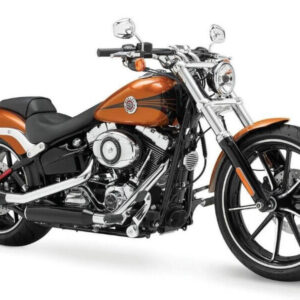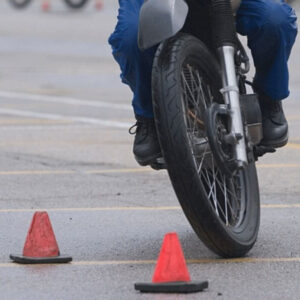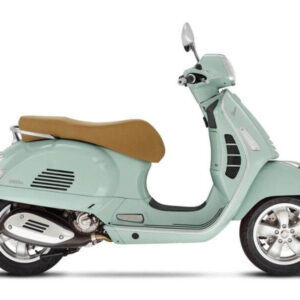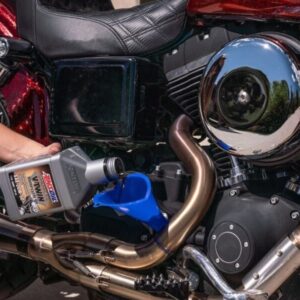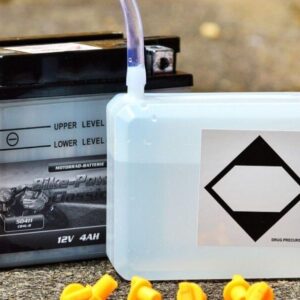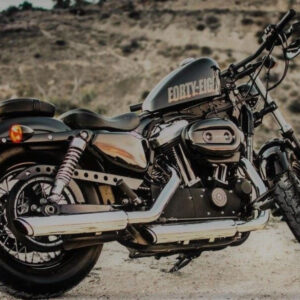How to winterize a motorcycle? Winter is here whether we like it or not, and even though our riding season is longer than most places, it still sucks in New Orleans. A lot of riders here keep riding all the way through winter and some put their bikes in storage for the coldest months.
Unless you have no other transportation or happen to be a north pole elf, it’s safe to say your bike will be spending more time in the garage than usual.
How To Winterize a Motorcycle?
At a minimum, you’ve got to attend to the fuel system and the battery. Whenever you’re parking your bike for an extended period of time you run the risk of having your battery go dead and the gas gumming up.
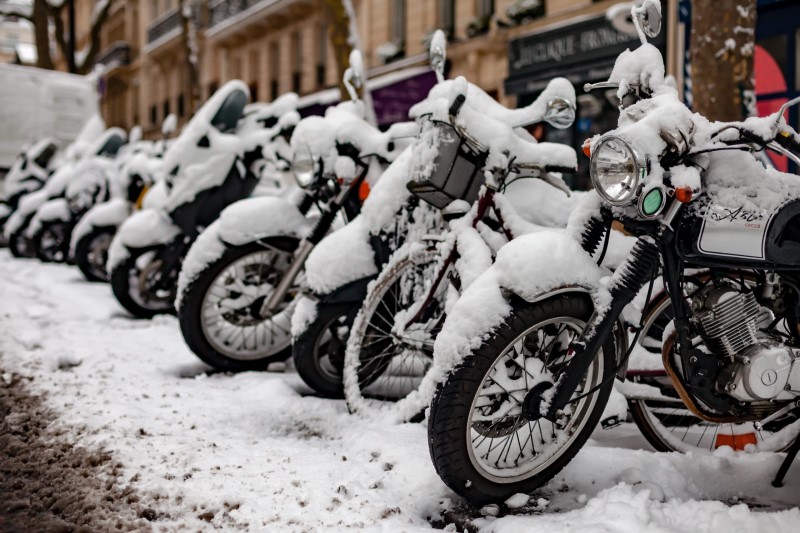
Deal With Your Fuel System And Gas
Luckily, a tank full of foul-smelling swill is pretty easy to avoid. If your bike has carburetors and a petcock, you can easily drain the fuel system. However, most modern bikes are fuel injected, and there’s really no easy way to empty the tank.
Instead, I like to fill the tank to the brim and mix in a fuel stabilizer. A quality fuel stabilizer will keep the gas from going bad and it also helps neutralize the ethanol that’s in today’s gasoline so it doesn’t wreak havoc on your fuel system.
Storing the bike with a full tank does two things: First, it doesn’t leave any room for air inside the tank, so rust is less likely to form. Second, you roll into the next riding season with plenty of gas for that first ride. So go ahead and top the tank off, add some stabilizer, and run the bike for a few minutes so that treated gas makes its way throughout the fuel system.
Prepare Your Battery For A Winter’s Slumber
The next big concern is the battery. Traditional lead-acid batteries self-discharge over time, and, left alone, your battery will probably be too weak to start your bike after a few months.
So it’s really, really important to hook the battery up to a smart charger so it stays topped up and ready to crank. There are lots of chargers and maintainers out there, but you want to make sure you get a smart charger that only feeds current to the battery when needed.
If you’ve got a lithium-ion battery in your bike, you can get away with just disconnecting the negative terminal. Lithium-ion batteries have an extremely low self-discharge rate and can sit for a year or more without losing much juice.
If you don’t have access to a power source where you’re storing your bike, or live in an apartment, you’ll want to remove the battery from the bike and plug it into a trickle charger indoors.
Okay, so if you’re in a hurry or just lazy, then those are the minimum requirements for winterizing your bike. But if you want to do everything you can to preserve your motorcycle’s finish and moving parts, here are a few more things you should do.
Clean Your Motorcycle
Before you mothball the bike, give it a proper bath to wash off the grime and dead bugs and other stuff that can corrode the paint and metal.

Then wax the painted parts, apply a silicone protectant to plastic panels, and wipe down chromed, polished, or anodized metal components with a rag that’s been moistened with an aerosol lubricant.
The wax and silicone will keep those painted and plastic parts clean and protected, and the light oil in the lubricant will help prevent metal from rusting. Speaking of rust, make sure you thoroughly clean and then lube your chain.
Winterizing Your Engine
Next, let’s turn to the engine. Extremists insist you need fresh oil in the fall before storage and fresh oil come spring. That’s overkill and a waste.
Of course, you don’t want dirty oil sitting in the engine stagnating all winter, so if you’re more than halfway to your next scheduled oil change, go ahead and do it now.
That way the engine internals are bathed in fresh engine oil and you’ll be ready to ride in the spring. If the oil is pretty fresh, just make sure it’s topped up.
Make Sure Pests Don’t Call Your Motorcycle Home
Another thing you may want to do for your motor is to close the doors. I’m talking about blocking the muffler and airbox inlet with heavy plastic and a rubber band or zip-ties.
This takes care of two things: First, it’ll discourage rodents from nesting in your airbox and muffler, and it’ll seal out moisture that could potentially corrode your valves or cylinder walls.
I’ve got it easy with this CB300F, but most bike’s airboxes are a pain to get to. And while we’re talking about pain-in-the-ass procedures, if you really want to protect your cylinder and rings, you can pop the spark plugs out and squirt some fogging oil in the cylinder. In my opinion, that’s not necessary, especially if you’re already plugging the pipe and airbox.
Protect Your Motorcycle’s Tires
Okay, next up are your bike’s tires. Sitting still isn’t great for the compounds in motorcycle tires, so to help prevent flat spots you’ll want to make sure the tires are properly inflated and prop the bike up on track stands so the tires aren’t loaded.

If your bike has a centerstand, you’re golden. If not, it’s worth investing in a set of stands since they’re really handy not just for winter storage but also for performing regular maintenance like changing the oil and lubing the chain. If it’s too late, you can mark your tires with a piece of chalk and roll the bike forward or backward to prevent flat spots.
Keep The Outside Off Your Bike
Finally, give your bike a comfy blanket to sleep under for its winter nap. Something as simple as an old sheet will keep dust off your bike, but cotton tends to attract moisture and might mildew, so you’re better off with a synthetic bike cover or even a tarp.
Everything I’ve recommended so far assumes you’re storing your bike inside a garage or basement or somewhere else out of the elements. If you’re forced to park your bike outdoors, you’ll want to do everything I’ve mentioned plus upgrade to a heavy-duty waterproof bike cover with grommets at the bottom so you can strap it in place.
Why Should You Winterize Your Motorcycle?
If you are not winterizing your bike and simply putting it in storage for a long period, deposits or sediment may develop in the cooling system and gas tank. The oil may become sludgy, and you may end up with brittle chains, cracked tires, and a dead battery.
If you properly winterize your bike and get it ready before putting it into storage, you will have a bike ready to run on the first day of spring or during one of those warm winter days.
FAQs
Is it OK to leave gas in motorcycle over winter?
Empty gas tanks can rust while your motorcycle is in storage over the winter. Fill the gas tank about 90% full and add a fuel stabilizer to reduce the possibility of damage.
Is it necessary to winterize a motorcycle?
You have to winterize your bike to make sure all its parts and fuel stay in good condition. Winterizing your motorcycle is not just about keeping your bike stored during the winter. You also have to ensure that your bike is ready to ride again as soon as spring arrives.
What happens if you don’t winterize a motorcycle?
In most cases you are going to have a weak battery and degraded fuel. The best option is to get a battery tender to gently charge the battery overnight. Once charged, your battery will better be able to get the bike started on the old fuel.
Above is information about How to winterize a motorcycle? that we have compiled. Hopefully, through the above content, you have a more detailed understanding of Why should you winterize your motorcycle? Thank you for reading our post.

